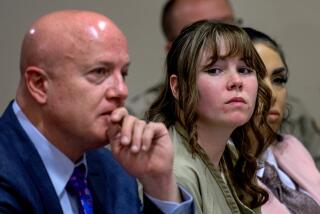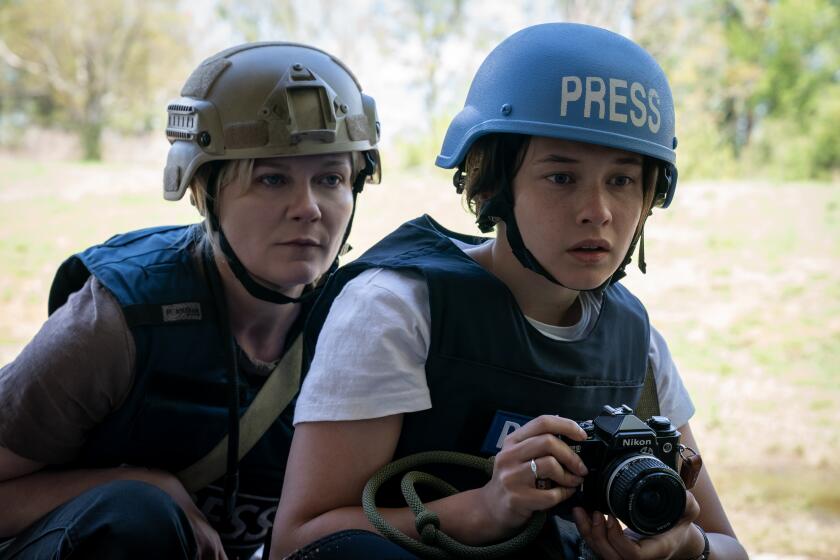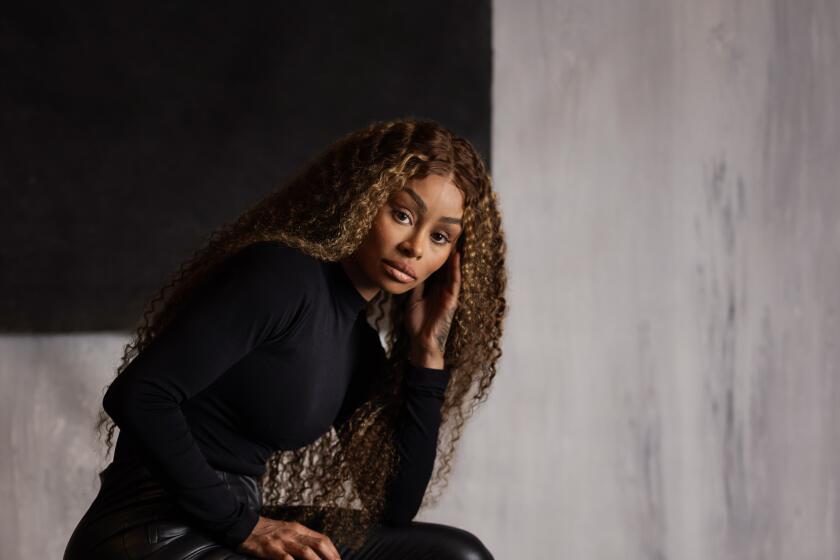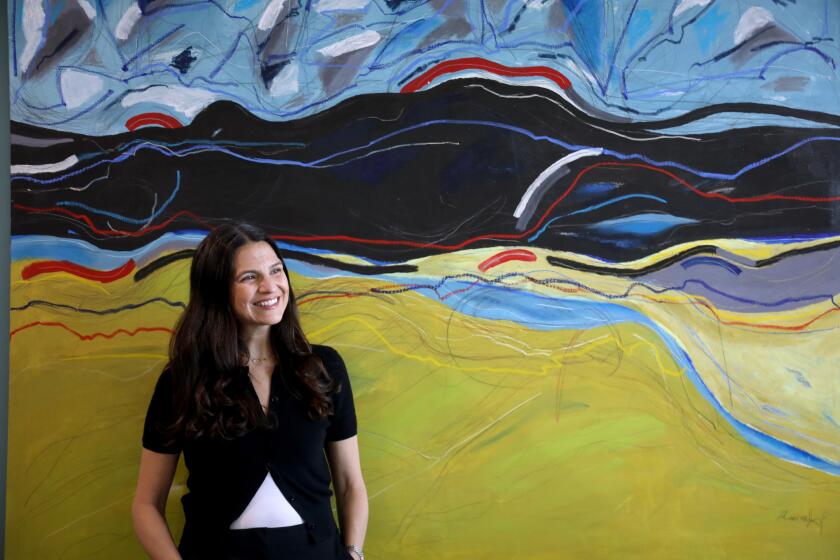The Far Side of Retirement
Millions of comics fans mourned the departure of “The Far Side” from their newspapers on Jan. 2, 1995. Its creator, Gary Larson, had decided to retire from syndication.
But “The Far Side” continues to thrive in book form. Larson’s latest, “Last Chapter and Worse,” released Sunday by Andrews and McMeel, includes 13 new cartoons.
Recently, Larson agreed to sit down and talk with Jake Morrissey, his editor. The following is a look at one of the country’s most private cartoonists.
*
Question: I’m often asked, “What’s Gary Larson doing in his retirement?” What have you been doing with yourself?
Answer: My retirement has backfired on me in some ways because I feel like I’m actually more involved with cartooning now than when I was doing the syndication. There are always ongoing projects that haven’t stopped, and there are still a couple of years of books and calendars remaining. Then also there’s my involvement with our second animation project [a new “Far Side” TV film]. The only thing that I’m not doing is the daily panels.
Q: Do you still sit down at your drawing board every day?
A: I was just there this morning working on some layouts for the animation project. But it’s a different kind of work than it was when I was drawing “The Far Side.” I’m just looking at other cartoonists’ work who are drawing in my style and making changes.
Q: Do you still come up with ideas for cartoons? Do they pop into your head? Is that muscle still exercised?
A: You know, I can’t say that I am really thinking about it very much. I don’t have ideas that are coming left and right. That’s because the nature of what I used to do was somewhat more deliberate. I’d sit down and go to work. And I would let that part of my mind loose and start to come up with things, start to sketch things. I’d get the juices flowing and then hope something would happen. I don’t drive around or go someplace and have thoughts like, “Oh, that would be a good cartoon,” or “That’s a strange thing; I should remember that.” Usually when I sat down to draw a cartoon, it would be more of a reflection of things in my past. Or it could be something I had experienced that morning, or that week, or something I might know that’s part of my background.
Q: Do you find that your sense of humor has evolved at all? When you look back on some of the old cartoons do you think, “Was I nuts to think this was funny?” or do you appreciate them more now than perhaps you did in the past?
A: Both things have happened to me. I thought some of my earlier cartoons were not exactly great shakes at the time I drew them. Now I see a certain innocence in them. The humor has a kind of purity to it, I guess. And it works better on some level for me now.
Q: Do you read other people’s cartoons?
A: I don’t. No.
Q: Why not?
A: You know, I don’t read them because I think for the most part the comics don’t have an interest for me. There’s just nothing there these days that makes me want to go seek them out. I’m not trying to say my work wouldn’t have sparked that same reaction from somebody else. There’s just nothing there for me personally.
Q: If you could draw another cartoon for a week, which cartoon would you draw?
A: “Family Circus.” It would be a kick to take one of those neighborhood themes when they show a little map . . . you know, put in the quicksand . . . whatever else, it would be fun to take something that’s so light and innocent and kind of mess with it.
Q: You’ve always been known for humor that has an attitude or a distinct sensibility. Were you ever interested in having characters in “The Far Side”?
A: No.
Q: Why not?
A: Well, I instinctively thought of that as very limiting. And I also just didn’t see humor as something that had to be confined to one particular character. To me what was exciting was trying to do something that would crack someone up. And I didn’t see how characters or a particular character enhanced that. In fact, I think it would work against it in some cases. A certain face on a character would work in one instance but not in another. Although admittedly, as the years went by, all my stuff got boiled down to about six faces. But when I started off I thought I had to reinvent the wheel every single time I drew someone, and obviously I was going to hit a wall with that.
Q: What do you think you’re better at: drawing or writing?
A: The quick answer to that would be my writing. Not that every caption I did was a perfect little gem, but I knew the importance of it. It has to do with timing and those kind of things that are in humor of any kind, written or spoken.
There are so many cartoonists who can draw circles around me (no pun intended). I don’t want to minimize that; having a certain amount of drawing skill is important too. The whole idea is to communicate something, and it doesn’t mean it has to be elaborate. It just has to work.
Q: What did you learn about yourself when you were doing this every day?
A: I guess the big thing is that I could do it every day. That was a very formidable task in front of me when I first started doing it: How was I going to do this day after day, week after week--and then, of course, month after month, year after year? And I thought there was no way I was going to be able to do it, but I wasn’t going to tell anyone that. I would just go until it stopped and I’d say, “Well, thanks, everyone, but I’m done.”
But as it turns out, the creative process isn’t as linear as that. It didn’t keep me from sweating it even to the very end, and I was amazed sometimes when those five or six cartoons got put together and went out in the mail. It was like, “Ha, I did it again.”
Q: Do you think it helped you that you were so innocent about the process or innocent about the possibilities?
A: Oh, yeah, it helped. I didn’t have anything in the mix when I started doing this--long before I approached a syndicate. The only thing I knew was there were some cartoons out there, mostly in magazines, that I did like and enjoy and thought were funny. And I was inspired by some of the things I saw by other cartoonists. But I didn’t really have too much of a notion about newspapers and newspaper comics. In fact, I mostly saw those as strip cartoons that take up 90% of the page. And I didn’t really know if I would fit in. It inadvertently caused me to walk through the door of the editor’s office with something that was different.
Q: Because “The Far Side” was as successful as it was, do you think it proved that nontraditional or unusual humor can have a place on the comics page? Or do you think it was something else that brought it the success it had?
A: What I think it proved, if anything, was that readers’ appetites for humor are more varied than perhaps we once thought. I think maybe what it did was tap into a sense of humor that was already out there, an adult readership that connected with it.
I didn’t expect this kind of success from it, but I never had a real wrenching feeling that I was going against the grain of readers, whoever it is out there who looks at these things. Although obviously you go against some people’s grain all the time.
The resistance I always felt and was hearing about was from newspaper editors. That was, oddly enough, the thing that was hardest to break down. But as long as “The Far Side” hung in there for a while, it would find an audience or a readership and usually would make it through.
This kind of humor was around already in other media. “Saturday Night Live” was in its glory days. There were other shows and stand-up comics, and it obviously was in magazines and books. It was just not appearing in newspapers. And I didn’t really understand why or why not, but it was all I could do.
Q: You often drew cartoons about animals and birds and primates and that sort of thing. Is there any kind of animal or vegetable or mineral you really didn’t like? I used to hear from people: “Gary Larson hates cats, Gary Larson hates dogs.” The truth can now be told: Gary Larson never liked. . . .
A: I never liked my own species.
No, there’s nothing. To me it was just humor. It’s irreverent. Some people call it sick, but it was an equal opportunity sickness.
Q: Your art style has evolved over the life of “The Far Side,” and profoundly in the sense that you look at the older cartoons and they have a rougher, heavier style.
A: It would be hard to get worse. I had only one direction to go.
Q: Are you comfortable with the way “The Far Side’s” artwork looks now?
A: Yeah, I am. It is difficult for me to talk about my drawing or my technique because I never drew that well. And I was always struggling. I used to work harder at some cartoons than probably people would ever expect that I did. But I do have a place I’m going in my mind, and I’ll work at it and work at it until I finally get it. It might be just a silly face I’m drawing. Without being that great an artist, in my gut I knew where I wanted to go with something. And I would try to get it there.
Q: I’ve talked to cartoonists who felt that they were so close to something really good, but something about it didn’t gel as well as it should have for a variety of reasons: Their limitations as an illustrator, for example.
A: Those were the battles. For me, perspective was always important. There are some cartoonists who can stand at the foot of a building looking straight up and they’ll capture it perfectly. And then there are those of us who do the same drawing and it’s the goofiest-looking thing in the world. But after a while I guess you just learn what you’re capable of and what you can and can’t do.
Q: Do you adjust your cartoon ideas accordingly? Do you ask yourself: “Yeah, that’s a great idea. But I can’t draw that.”
A: Usually I was foolish enough to try it anyway. You know, there were some things that were just physically impossible, technically impossible, but you would try. I did plenty of mob scenes running through the streets, things like that. And those are things that are challenging for someone like me to do. But you just do it; you do the best you can. But someone else, who’s trained or just very talented, can make it into an epic.
Q: Do you feel a responsibility to your readers to try to do the best you can or present something in as funny a light as possible? Or did you draw for yourself and hope there were other people out there who shared your sensibility?
A: I don’t mean to sound corny about it, but I was very respectful of readers. Whoever was following my work I was going to try to treat well. I thought of every day as a little curtain going up and it’s show time, and you better know how to dance.
I think it’s vital to be honest with yourself. You do have to satisfy yourself first. If you’re drawing something, you have to ask yourself if it’s something you genuinely think is funny. Or is it starting to fall into just a category, just kind of a shtick thing? I think it’s important for all cartoonists to be honest with themselves about their own sense of humor and what they’re doing.
Q: What do you think your greatest strength as a cartoonist is?
A: I’m not sure how to answer that. I could answer it in a very general way and say, oh, I was just in tune to myself, in tune to my sense of humor. I feel I always had a really direct link with that part of me--pretty unfiltered in that sense.
Q: Do you consider yourself a normal person?
A: No.
Q: Why not?
A: Who’s normal? I have some friends that make me feel pretty normal.
I guess everybody’s normal and nobody is at the same time. Yeah, I guess I am pretty normal.
More to Read
The biggest entertainment stories
Get our big stories about Hollywood, film, television, music, arts, culture and more right in your inbox as soon as they publish.
You may occasionally receive promotional content from the Los Angeles Times.






